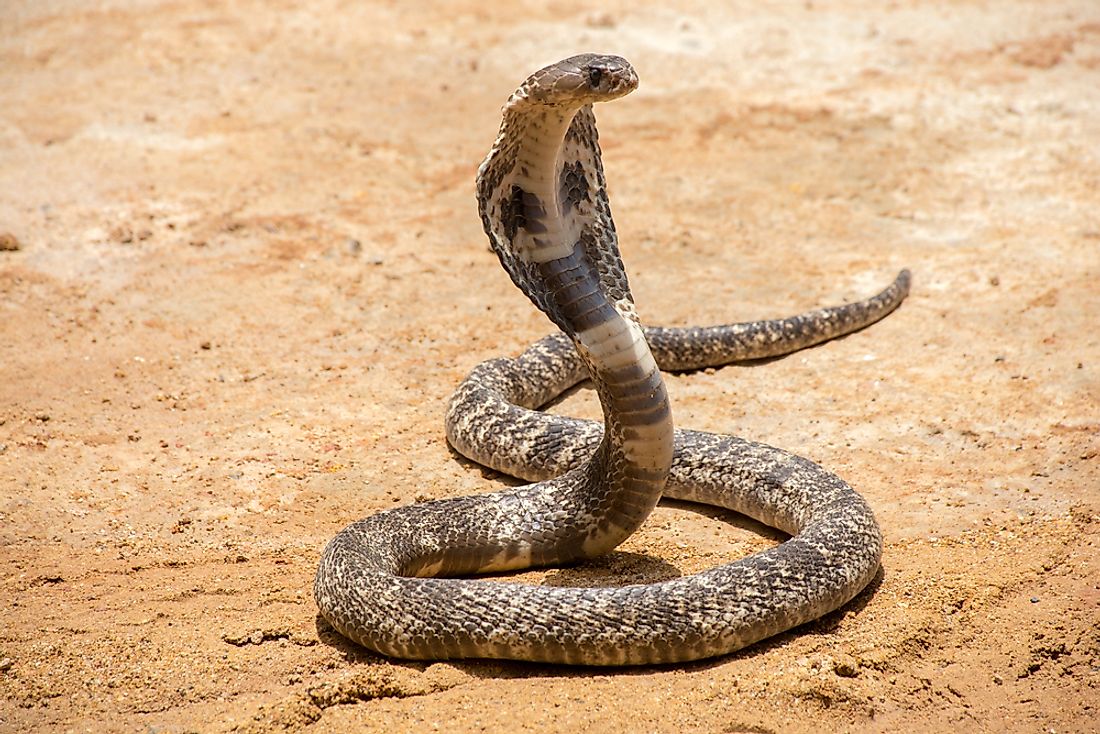Where Do King Cobras Live?

King cobra is a large species of venomous snake of the family Elapidae found mostly in the plains and rainforest of India and other regions of southern Asia like China. It is the largest venomous snake in the world and can grow as long as 13.1 feet long, with the longest ever recorded individual snake measuring 19.2 feet long. The snake usually feeds on other small animals like lizards, rodents, eggs, small mammals, and other snakes. The snake is revered and has a fearsome reputation in all its range although it avoids confrontation with humans. King cobra is the world’s only species of snake that build nests to lay eggs, and they guard them jealously until they hatch. The snake is a national reptile of India and is a prominent symbol of traditional folks and mythology in different countries like Myanmar, Sri Lanka, and India
Habitat
King cobras are endemic across Southeast Asia and the Indian subcontinent. They are also found in the southern regions of East Asia where they are not as common. The snake is endemic in countries such as India, Bangladesh, Burma, Bhutan, Cambodia, Nepal, China, Philippines, Malaysia, Laos, Singapore, and Vietnam. In the Indian subcontinent, the snake has been recorded in regions like Goa, the Western Ghats in parts of Karnataka, Tamil Nadu, and Kerala. They are also widely found in the Himalayas foothills, Uttar Pradesh, the east coast of Odisha and Andhra Pradesh, northern regions of West Bengal, in Sundarban mangroves, and other parts of northeast around the Andaman Islands. The king cobra prefers to live in dense forests in the highlands and prefer areas having lakes and streams. The populations of the king cobra have been dwindling in most of the areas because of the destruction of the forest and the ongoing hunting for international trade.
Nest of the King Cobra
The male king cobra usually spends time taking shelter in animal burrows, rock formations, and under the fallen trees. The female king cobras are unlike other snakes in that they are exceptionally dedicated parents. The female scrapes leaves among other debris to build a mound and stays within the nest until the young ones are hatched. She guards the nest tenaciously and raises her head whenever she is stressed or when approached by a large animal. The nest has two compartments, the upper chamber and the lower chamber. The lower chamber holds the eggs, which are warmed by the leaves and other vegetation matter, while the upper chamber is the place where the female snake stays while guarding the eggs. The male king cobra could also guard the nest together with a female. Just before the eggs hatch, both the male and the female cobra leave the nest and the eggs hatch alone. The king cobra hatchlings also have potent venom just like the adult snakes.
Conservation
The IUCN has classified the king cobra snake as a vulnerable species as a result of the widespread hunting for medicine, meat, and international trade, as well as the loss of habitat because of deforestation. In India, the king cobra is protected by the wildlife protection Act, which was adopted in 1972 and has been amended over the years. Anyone found killing the snake could face imprisonment which could reach a maximum of six years.











